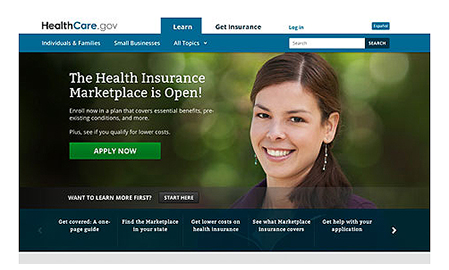With the second wave of health insurance enrollments months away and Healthcare.gov hiccups a recent memory, a post-mortem would seem to be in order. The Urban Institute Health Policy Center took a look at what resources consumers used most when exploring insurance options and the overall takeaway was that websites will remain a critical information source, but money should continue to flow towards call centers, navigators and media sites.
The good news for the Centers for Medicare and Medicaid Services: the Urban Institute report overlaps with Tuesday’s announcement that CMS is putting $60 million towards Navigators, individuals who help customers with a variety of tasks, including walking users through plan options and filling out paperwork. The $60 million for the 2104-2015 open enrollment period which starts in November is $7 million less than last year. When asked about the seeming shortfall, CMS noted in an email that this next enrollment period is shorter than 2013’s and that the agency is also funding Certified Application Counselors who will walk users through federal marketplace options.
The Urban Institute’s analysis of the Health Reform Monitoring Survey found that this sort of personal approach to health insurance is a critical link for Hispanic and lower income adults, which the institute found were less likely to use websites to explore health plans on federal or state websites.
UI analysts wrote that 80% of adults who used insurance agents or brokers said they were helpful, and that 75% of adults who sought out human interaction—other than call centers—considered them helpful. Websites and call centers rated slightly lower, with around 65% of non-elderly adults saying websites were helpful.
Overall, 50.4% of adults relied solely on websites to learn about options on the healthcare marketplace, almost 30% used websites and additional information outlets and just under 20% of adults bypassed websites altogether and relied on third-parties, like insurance brokers, family and friends to learn about their options.
UI said 38.6% of Hispanics kept away from websites, compared to 16.1% of white non-Hispanics.
The Urban Institute’s researchers say that upping enrollment among the electronically disengaged “will require targeted education strategies for different racial and ethnic groups, as well as for people of different ages.”
UI says maximizing outreach to Hispanics should probably include bilingual call centers and in-person assistance—data shows that 39.8% of Hispanics were more likely to look for direct assistance, compared to 30.9% of white, non-Hispanics.







